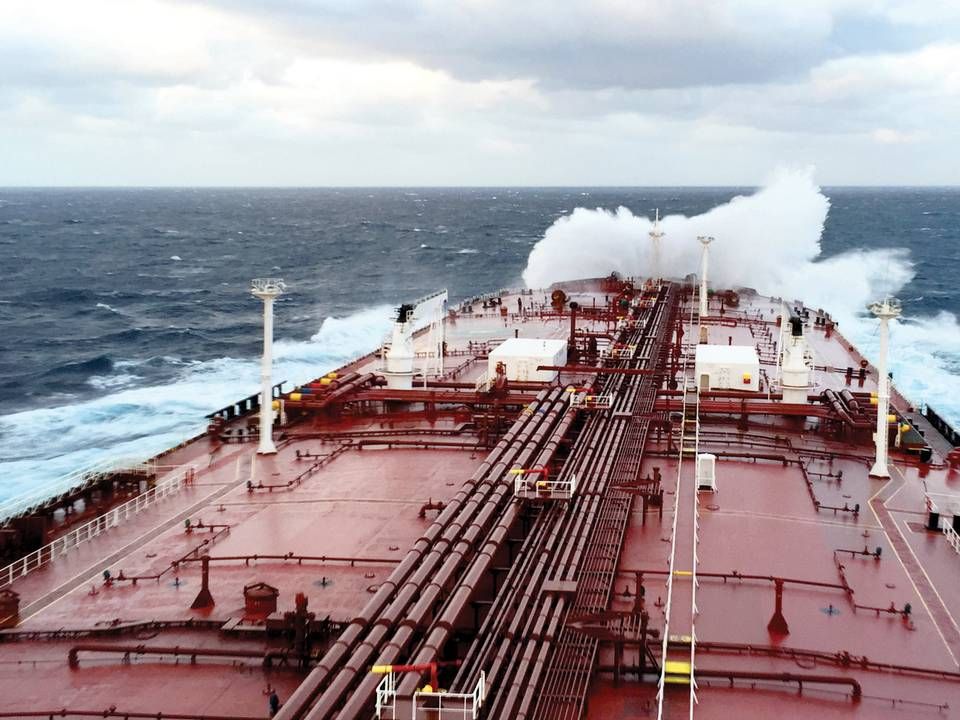DNB looking to offload shipping and oil loans totaling USD 10 billion

OSLO
Shipping and offshore have come at a high price for DNB, and the bank has therefore decided to separate some of the loans into a special unit.
Specifically, this is a unit covering loans for a total USD 10 billion, distributed among loans to shipping, offshore and oil.
Different solutions must be found for this big pile of loans, explains Kristin H. Holth in an interview with ShippingWatch.
On Sept. 1, she became global head of the newly established unit Ocean Industries after serving as head of shipping and offshore at the bank for several years.
"In addition to Ocean Industries, we've established a unit in which we've placed part of the portfolio that must be reduced or for which we need to find other solutions. We're taking around USD 10 billion out of Ocean Industries and placing them in a non-core division made up entirely of Ocean Industries customers," Holth tells ShippingWatch.
The plans for the new unit were presented at DNB's Capital Markets Day in November last year, at which the bank informed that the portfolio of close to USD 10 billion is limited to shipping and oil-related customers.
Of these, close to 30 percent face a restructuring, while less than a fifth are described as loss exposed and non-performing.
Has reduced lending
The interview at DNB's headquarters took place in January, where Holth talked to ShippingWatch about the plans for Ocean Industries. Since then, the bank published its annual report Thursday last week.
Several shipping banks – including DNB – have in recent years significantly reduced their lending to shipping and offshore, while new financing opportunities have through, for instance, China and the bond market.
And the DNB executive generally finds it hard to imagine that the traditional major lenders to the shipping sector, namely the banks, will ever increase their exposure to shipping again.
"As for the banks, I don't see them particularly increasing their exposure to the sector again. All banks are facing a challenge in terms of securing decent capital returns, and shipping and offshore is an area that is very capital intensive and demanding," Holth tells ShippingWatch.
In Germany, Commerzbank has been working with a clear strategy to trim its shipping portfolio, while another German major, HSH Nordbank, is currently working to find a new owner.
And other Nordic banks have, like Norwegian DNB, changed their approach to shipping and offshore. However, after several years of reducing loans, Nordea recently told ShippingWatch that the bank does not expect any major changes to its lending books for shipping, offshore and oil services in 2018.
Nordea's loans to shipping and offshore reach "comfortable level"
"It could vary for the individual bank, but the trend will at best be flat," Holth says of the overall developments.
"I don't see the exposure growing, that would be surprising. The companies have to diversify their financing sources to ensure that they don't have the entire financing risk at one single bank or segment," she explains.
Will serve as consultant
The new Ocean Industries unit has a total of 250 employees, and at the end of the third quarter its lending portfolio stood at close to NOK 250 billion, Holth told ShippingWatch in January.
"We've gone from serving as a bank to serving more as consultants. We're not just a bank where one can borrow money, we're also a consultant that can find investors as well as several financial solutions for our customers," Holth explains, adding that in term of loans, the bank expects a "somewhat stable level going forward, but that's for Ocean Industries as a whole."
While loans to shipping stood at NOK 87.9 billion at the end of the fourth quarter, oil & gas and offshore accounted for NOK 108.9 billion, according to DNB's annual report, published Thursday.
For both areas, lending has been reduced over the past six years. Holth explains that DNB has scaled down its portfolio and removed customers "where we don't have much value and where we haven't built a product knowledge base that enables us to serve as consultant."
In this sense, the bank will spend time on customers who also draw on a broad swath of the capital market, she says in Oslo.
"This marks a continuation of a trend, and while we've reduced our number of customers, we've built skills and the product mass by expanding our placement ability for bonds, equity, export credit, product and leasing, etc."
(Article continues under the graph)
DNB is looking to increase its number of customers in seafood in particular, which Holth describes as a sector which is "in an earlier stage than some of the others, which are instead more in a maturing stage."
Do the loans to shipping and oil have an appropriate size for you today, or should they be reduced further?
"There's no target figure. The goal is to achieve a customer base that makes us relevant. This could change if we, for instance, enter the bond market. This also means reducing the lending portfolio, but that's fine, as it's important that we're able to analyze and find solutions our customers," Holth tells ShippingWatch.
In terms of lending, crude oil tanker represents the biggest item in DNB's shipping portfolio.
The bank's shipping loans have been reduced by NOK 50.2 billion since the end of the third quarter 2015 to NOK 87.9 billion at the end of 2017.
English Edit: Daniel Logan Berg-Munch
DNB less squeezed by shipping and offshore
Nordic shipping banks foresee tough 2018 for tanker carriers
DNB: Bigger companies and lower prices are the way forward for offshore
Related articles
DNB less squeezed by shipping and offshore
For subscribers
Nordic shipping banks foresee tough 2018 for tanker carriers
For subscribers



















